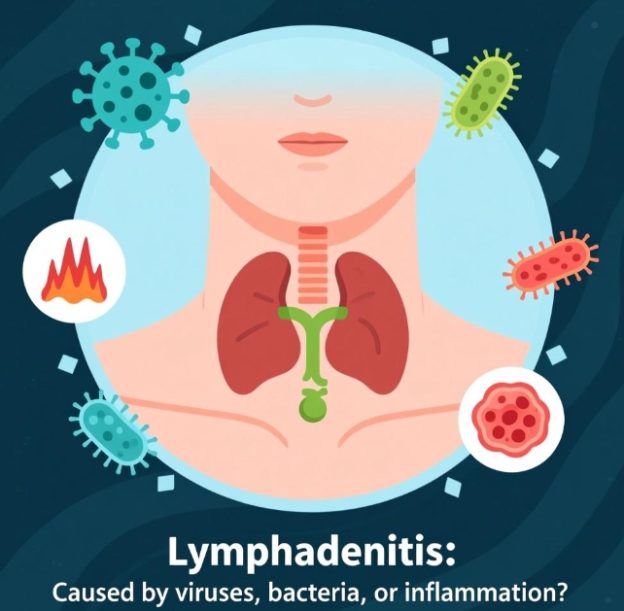Lymphadenitis is an inflammatory condition of lymph nodes caused by bacterial, viral, or other pathogens, usually secondary to infections of the skin, mouth, or respiratory tract. Common manifestations include:
- Enlarged lymph nodes
Nodes range from pea- to bean-sized or larger, feel firm or rubbery, and are well-defined in acute stages; chronic nodes may be slightly adherent . - Pain and tenderness
Most prominent in acute phase; palpation, head turning, arm lifting, or chewing can aggravate discomfort . - Skin changes
Overlying skin becomes red, warm, and edematous; severe cases mimic cellulitis . - Fluctuation and abscess formation
Central necrosis liquefies, producing a fluid-filled cavity with throbbing pain . - Fever and systemic toxicity
Temperature often >38 °C with chills, malaise, and poor appetite; young children may develop febrile convulsions . - Spontaneous rupture and fistula
Untreated abscesses may burst, creating chronic sinuses that discharge pus and heal slowly . - Chronic lymphadenitis features
Nodes are usually non-tender, hard, mobile, and persist for months to years, flaring after minor infections . - Signs of primary infection
Gingival swelling with dental sources, sore throat with tonsillitis, or crusted skin wounds pointing to the portal of entry .
Persistent, hard, fixed nodes accompanied by night sweats or weight loss warrant biopsy to exclude lymphoma or metastasis.
| Key Feature | Acute Lymphadenitis | Chronic Lymphadenitis |
|---|---|---|
| Node size | 1–3 cm, may enlarge rapidly | 0.5–2 cm, persistent |
| Pain | Moderate–severe, tender | Minimal or absent |
| Skin | Red, warm, edematous | Normal color |
| Abscess | Common, with fluctuation | Rare |
| Fever | High >38 °C, chills | Low-grade or absent |
| Course | Days to weeks | Months to years |
| Complication | Rupture, fistula, sepsis | Scarring, cosmetic concern |
